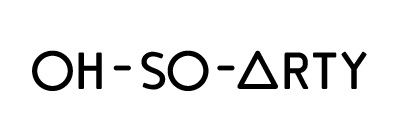Inspiration - noun in·spi·ra·tion \ ˌin(t)-spə-ˈrā-shən , -(ˌ)spi- \
Merriam-Webster Dictionary defines inspiration as 'the action or power of moving the intellect or emotions'. It can strike at any time and its myriad sources differ amongst individuals. As we are constantly seeking out new creative outlets to inspire us, we decided to ask our local arty guides what texts have had a profound influence on them. Their answers ranged from ancient poetry to contemporary tomes. As professional art guides it is our passion to awaken the creative side of others through the astounding power of art.
Follow along with this ongoing series of posts to learn more about our guides and gain some inspiration for yourself along the way.
Local guide in Milan, Sara Cattaneo
David Joselif, After Art, 2013, Princeton University Press
As the title says, After Art is an essay about what happens after the creation of a work of art. Joselif confronts the matter of contemporary art and architecture in an age of proliferating networks and technologies, questioning about the distribution of art and its implications: ethics, and on the temporal and spatial limitations of its circulation. His reflections are routed around the power of imagination, in order to predict its new development. Lately artistic innovations are brought about not by the seems they examine, yet by the connections they manage to create with the public: images open new ways of cultural diplomacy.
After Art made me reflect on the developments of contemporary art and architecture raising new questions, such as: how important is the cultural context in the era of globalization and digital technology? How important is the art distribution network in respect to the art itself?
A milestone for the understanding of art and architecture in the times of Google.
Ares Kalogeropoulos, 2012
Bruno Munari, Art Theorems, 1961, Scheiwiller
“The biggest hindrance
to understanding a work of art
is wanting to understand.”
Art Theorems is a collection of eighteen theorems about art. The first eleven were published around 1945 in different art magazines, with the intention of proving the falsity of some preconceptions about art, through logical deductions, while the remaining seven were instead written for this publication.
The strength of these writings is that they are still very relevant after so many years from its first appearance, together with Munari's ability to condense such complex concepts in a few words. For me, this small book is a little manual to never lose the compass in such an immensity like the one of the contemporary art scene.
Munari, Casati, Pedeferri

![Textual Inspirations of Art World Professionals [Part 3]](https://images.squarespace-cdn.com/content/v1/57eb2e2215d5dbca6f4c6307/1514039294291-CTKEVXW1L0VVCFMK4TP9/02.jpg)


